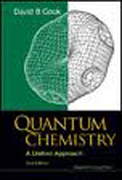
This book is a presentation of a qualitative theory of chemical bonding, stressing the physical processes which occur on bond formation. It differs from most (if not all) other books in that it does not seek to “rationalise” the phenomena of bonding by a series of mnemonic rules. A principal feature is a unified and consistent treatment across all types of bonding in organic, inorganic,and physical chemistry. Each chapter has an Assignment Section containing “problems” which might be usefully attempted to improve the understanding of the new material in that chapter. The new edition has had several appendices addedwhich give support to concepts which, if included in the main text, would have hindered the main thrust of the presentation. These new appendices are an attempt to clarify oversights and errors which have been tacitly ignored and which have now become part of the conventional wisdom. INDICE: How Science Deals with Complex Problems; What We Know About Atoms and Molecules; A Strategy for Electronic Structure; The Pauli Principle and Orbitals; A Model Polyatomic: Methane; Lone Pairs of Electrons; Organic Molecules with Multiple Bonds; Molecular Symmetry; Diatomics with Multiple Bonds; Dative Bonds; Delocalised Electronic Substructures: Aromaticity; Organic and Inorganic Chemistry; Further Down the Periodic Table; Reconsidering Empirical Rules; Mavericks and Other Lawbreakers; The Transition Elements; Omissions and Conclusions.
- ISBN: 978-1-84816-746-9
- Editorial: Imperial College
- Encuadernacion: Cartoné
- Páginas: 332
- Fecha Publicación: 01/04/2012
- Nº Volúmenes: 1
- Idioma: Inglés
